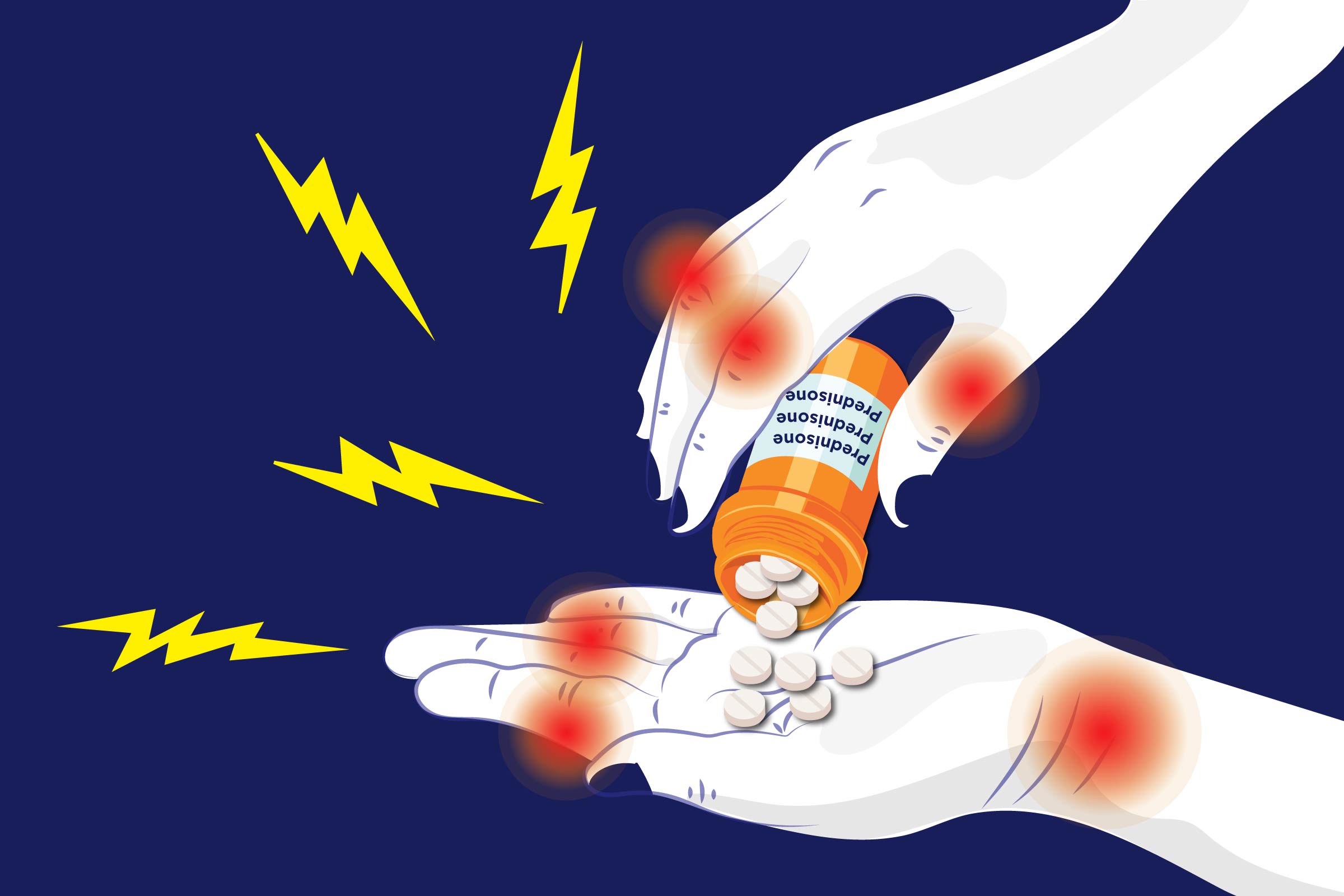Prednisone effectively reduces inflammation by dampening your immune system’s response. This makes it invaluable in treating conditions like autoimmune diseases and severe allergic reactions. However, understand this powerful effect also carries potential side effects, so close monitoring by your doctor is crucial.
Dosage varies greatly depending on your specific condition and response. Expect your physician to adjust your prednisone prescription throughout your treatment. Never alter your dosage without direct consultation; abrupt changes can negatively impact your health.
Common side effects include weight gain, increased appetite, mood changes, and increased risk of infections. These are often manageable with lifestyle adjustments and medication, but open communication with your healthcare provider is paramount. Report any concerning symptoms immediately.
Long-term use can have more significant consequences, such as weakening of bones (osteoporosis) and increased risk of certain infections. Your doctor will discuss strategies for mitigating these risks, potentially including supplemental calcium and vitamin D, and close monitoring of your overall health.
Prednisone is a potent medication. Its use requires careful consideration of its benefits against its potential risks. Active participation in your treatment plan, including open communication with your doctor, is key to achieving positive outcomes and minimizing unwanted side effects.
- Prednisone: A Detailed Guide to its Use as an Immune Suppressant
- Understanding Prednisone’s Mechanism
- Dosage and Administration
- Potential Side Effects
- Monitoring and Follow-up
- Interactions with Other Medications
- Long-Term Use Considerations
- Understanding Prednisone’s Mechanism of Action as an Immunosuppressant
- Impact on Immune Cells
- Gene Transcription Modulation
- Clinical Implications
- Common Medical Conditions Treated with Prednisone as an Immunosuppressant
- Potential Side Effects and Risks Associated with Prednisone Use
- Gastrointestinal Issues
- Other Potential Side Effects
- Dosage and Administration Guidelines for Prednisone as an Immunosuppressant
- Weaning Off Prednisone: A Gradual Approach to Minimize Withdrawal Symptoms
- Monitoring for Withdrawal Symptoms
- Managing Withdrawal Effects
- Maintaining Communication
- Potential Long-Term Considerations
Prednisone: A Detailed Guide to its Use as an Immune Suppressant
Prednisone reduces inflammation and suppresses the immune system. Doctors prescribe it for conditions like autoimmune diseases, allergies, and certain cancers. Always follow your doctor’s instructions precisely; self-adjusting your dosage is dangerous.
Understanding Prednisone’s Mechanism
Prednisone is a corticosteroid. It works by binding to receptors inside immune cells, altering their function and reducing the production of inflammatory molecules. This leads to decreased immune response, lessening symptoms of various conditions.
Dosage and Administration
Dosage varies greatly depending on the specific condition and patient response. Your doctor will determine the appropriate dose and schedule. Prednisone is usually taken orally, but injectable forms exist for specific situations. Never abruptly stop taking prednisone; tapering is crucial to prevent serious side effects.
Potential Side Effects
Common side effects include weight gain, increased appetite, mood changes, insomnia, and increased blood sugar. More serious, though less common, side effects can include osteoporosis, cataracts, and increased risk of infection. Report any unusual symptoms to your doctor immediately.
Monitoring and Follow-up
Regular blood tests are often necessary to monitor side effects and ensure the medication is working effectively. Your doctor will schedule these appointments, and adherence to this schedule is paramount for safe and successful treatment. Open communication with your healthcare provider is key to managing the medication.
Interactions with Other Medications
Prednisone can interact with other medications, so inform your doctor about all other medications, supplements, and herbal remedies you’re taking. This helps avoid potential complications. A pharmacist can also offer additional guidance on potential drug interactions.
Long-Term Use Considerations
Long-term use carries a higher risk of side effects. Your doctor will carefully weigh the benefits against the risks, adjusting the dosage and monitoring your health closely. Lifestyle modifications, such as maintaining a healthy diet and engaging in regular exercise, can help mitigate certain side effects.
Understanding Prednisone’s Mechanism of Action as an Immunosuppressant
Prednisone, a glucocorticoid, exerts its immunosuppressive effects primarily by binding to intracellular glucocorticoid receptors. This binding initiates a cascade of events, influencing gene transcription and ultimately altering the immune response.
Impact on Immune Cells
Specifically, Prednisone reduces the production and activity of various immune cells. It diminishes the number of circulating lymphocytes, including T cells and B cells, responsible for cell-mediated and humoral immunity, respectively. Furthermore, it inhibits the release of inflammatory cytokines like TNF-α and IL-1, reducing inflammation and immune-mediated tissue damage. Macrophage activity is also suppressed, affecting antigen presentation and phagocytosis.
Gene Transcription Modulation
The interaction with glucocorticoid receptors leads to the suppression of pro-inflammatory genes and the activation of anti-inflammatory genes. This shift in gene expression contributes significantly to Prednisone’s immunosuppressive effects. The precise genes impacted and the resultant changes vary depending on the cell type and concentration of Prednisone.
Clinical Implications
This mechanism explains Prednisone’s use in treating autoimmune diseases and inflammatory conditions. By dampening the immune response, Prednisone helps reduce symptoms and prevent tissue damage. However, this immunosuppression also makes patients more susceptible to infections, highlighting the need for careful monitoring and management during treatment.
Common Medical Conditions Treated with Prednisone as an Immunosuppressant
Prednisone, a corticosteroid, effectively reduces inflammation and suppresses the immune system. This makes it a valuable treatment for a range of conditions. However, remember to consult your doctor before using or changing any medication.
- Autoimmune Diseases: Prednisone often manages symptoms in autoimmune diseases like rheumatoid arthritis, lupus, and inflammatory bowel disease (Crohn’s disease and ulcerative colitis). It helps control inflammation and reduce joint pain, fatigue, and digestive issues. Dosage and duration vary widely depending on the specific condition and patient response.
- Allergic Reactions: Severe allergic reactions, such as anaphylaxis, might require prednisone to reduce swelling and inflammation. It’s typically used in conjunction with other treatments like epinephrine.
- Organ Transplantation: To prevent organ rejection after a transplant, doctors often prescribe prednisone to suppress the immune system’s attack on the new organ. This is a critical part of post-transplant care.
- Certain Cancers: In some cases, prednisone is used in combination with chemotherapy or other cancer treatments to manage symptoms, such as inflammation and swelling. This is frequently seen in leukemia and lymphoma treatment protocols.
- Asthma and Other Respiratory Conditions: For severe asthma exacerbations or other inflammatory lung diseases, prednisone can provide rapid relief from airway inflammation and improve breathing. However, this is typically a short-term treatment due to potential side effects.
- Skin Conditions: Severe skin conditions like psoriasis and eczema may respond favorably to prednisone’s anti-inflammatory properties. The medication helps to reduce redness, itching, and inflammation.
- Blood Disorders: Some blood disorders, such as autoimmune hemolytic anemia, benefit from prednisone’s immunosuppressive effects. This reduces the body’s destruction of red blood cells.
Note: This list isn’t exhaustive, and the use of prednisone depends heavily on individual patient needs and physician assessment. Always discuss treatment options and potential risks with your doctor.
Potential Side Effects and Risks Associated with Prednisone Use
Prednisone, while effective, carries potential side effects. Increased blood sugar levels are common, particularly in individuals with pre-existing diabetes. Monitor your blood sugar closely and discuss adjustments to your diabetes management plan with your doctor. Weight gain, often centered around the abdomen, is another frequent occurrence. Maintaining a healthy diet and regular exercise can help mitigate this.
Gastrointestinal Issues
Prednisone can irritate the stomach lining, potentially leading to heartburn, indigestion, or ulcers. Take prednisone with food to minimize these effects. If you experience persistent or severe stomach pain, contact your physician immediately. Fluid retention, resulting in swelling in the ankles, legs, or face, is also possible. Reducing salt intake might be helpful.
Other Potential Side Effects
Mood changes, including irritability, anxiety, or depression, are reported by some patients. Open communication with your doctor and support system is vital. High blood pressure and increased risk of infections are other concerns. Regular check-ups are crucial to detect and manage these complications. Prednisone can also weaken bones, increasing the risk of fractures. Adequate calcium and vitamin D intake, along with weight-bearing exercises, are recommended. Finally, prolonged use can affect your immune system, making you more susceptible to illness. Remember to practice good hygiene and consult your doctor about any infections.
Dosage and Administration Guidelines for Prednisone as an Immunosuppressant
Prednisone dosage varies significantly depending on the specific condition being treated and the patient’s individual response. Always follow your doctor’s prescribed regimen.
Initial doses are often higher, gradually tapering down as the condition improves. This reduces the risk of side effects. Your doctor will create a personalized tapering schedule.
Common administration routes include oral tablets. Your doctor may adjust your dose based on blood tests and your clinical response.
| Condition | Typical Starting Dose (mg/day) | Tapering Schedule |
|---|---|---|
| Autoimmune Diseases (e.g., Lupus, Rheumatoid Arthritis) | 20-60 | Gradual reduction over weeks to months; specifics depend on response |
| Organ Transplantation | High doses (vary widely depending on the organ and individual) | Slow reduction over many months or years under close monitoring |
| Allergic Reactions | 10-40 (often in short bursts) | Rapid reduction once symptoms subside |
Remember, this table provides general information only. Dosage should always be determined by your physician based on your unique medical needs. Close monitoring for side effects is vital.
Potential side effects can include increased appetite and weight gain, fluid retention, mood changes, high blood pressure, and increased risk of infections. Report any concerning symptoms immediately to your healthcare provider. Regular blood tests monitor your response and help manage side effects.
Never adjust your dosage or stop taking Prednisone without consulting your doctor. Sudden cessation can lead to serious complications. Always follow your doctor’s precise instructions.
Weaning Off Prednisone: A Gradual Approach to Minimize Withdrawal Symptoms
Your doctor will create a personalized tapering schedule. This usually involves reducing your dose by a small amount (e.g., 5mg) every few days or weeks. Never abruptly stop taking prednisone without consulting your physician.
Monitoring for Withdrawal Symptoms
Watch for symptoms like fatigue, muscle weakness, joint pain, nausea, and dizziness. These can indicate your body is adjusting. Keep a detailed record of your symptoms and share it with your doctor at your follow-up appointments. Increased anxiety and depression are also possible, so open communication with your healthcare provider is crucial.
Managing Withdrawal Effects
To ease potential side effects, maintain a healthy diet and engage in regular, moderate exercise. Adequate hydration is important. Your doctor might recommend additional supplements, like calcium and vitamin D, to support bone health. They may also prescribe other medications to help manage specific withdrawal symptoms.
Maintaining Communication
Regular check-ups with your doctor are vital during the weaning process. Honest communication about your experience is key to adjusting your tapering schedule as needed. Don’t hesitate to contact your doctor if you experience severe or concerning symptoms. Early intervention can help prevent complications.
Potential Long-Term Considerations
Long-term prednisone use can affect bone density. Your doctor may recommend bone density testing after you finish weaning off the medication. They might suggest lifestyle modifications or additional treatments to support bone health. Remember, complete recovery from prednisone effects can take time.







